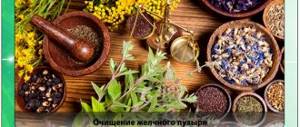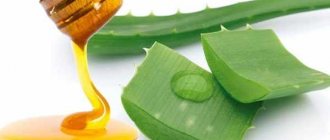General rules
Acidosis means a shift in the acid-base balance to the acidic side.
But this applies to tissues and environments that normally have a neutral environmental reaction of 7-7.35 (blood, tissues, lymph, internal environment of cells). This term does not apply to biological media that are initially acidic (for example, gastric juice) or slightly acidic (urine). To assess the condition of the gastrointestinal tract, the acidity value is determined, which consists of free hydrochloric acid and bound hydrochloric acid. Hydrochloric acid is produced by the parietal cells of the fundic glands of the stomach. A research method that allows you to determine acidity in the stomach and antrum is pH-metry . When performing daily pH measurements, even the daily rhythm of acid formation is determined. This allows for the most effective treatment - prescribing an acid-suppressing drug during the period of highest acidity.
What is dangerous about high stomach acidity? Normally, the process of acid formation is regulated and an increase in acidity turns on the mechanism of acid neutralization: the cells of the antrum of the stomach produce somatostatin , which blocks the secretion of hydrochloric acid. The cause of acid-related diseases is an imbalance in the mechanisms of acid production or acid neutralization, as well as poor nutrition and the presence of constant stress.
Against this background, with insufficient efficiency of the esophageal and pyloric sphincters, pathological gastroesophageal and duodenogastric reflux may occur, manifested by heartburn , belching and bitterness in the mouth. And with an imbalance between aggressive factors (with a high content of hydrochloric acid, pepsin , which represent acid-peptic factors) and protective factors (gastric mucus and duodenum, glycoproteins , bicarbonates , immunoglobulins , reparative activity of the mucosa, its good blood supply), inflammatory phenomena of the gastric mucosa occur . Increased acidity is a frequent companion to gastritis and peptic ulcers .
The secretion of hydrochloric acid and pepsin is regulated by the vagus nerve. And the mechanism of ulcer formation can be represented as follows: increased tone of the parasympathetic nervous system - gastric hypersecretion - formation of an ulcerative defect. Based on this, the opinion “No acid - no ulcer” was supported for a long time, but in recent decades, in connection with the discovery of Helicobacter pylori, the formulation became relevant: “No Helicobacter pylori - no ulcer.”
Therefore, treatment of peptic ulcer is aimed at the effects of two factors - acid-peptic, using drugs that reduce gastric acidity, and Helicobacter. The most powerful drugs that control stomach acid formation are proton pump inhibitors. Antacid drugs are still used, which reduce acidity by interacting with acid in the stomach cavity ( Almagel , Maalox , Taltsid , Rutacid phosphalugel ).
Nutritionists are also taking an approach based on the acidity of the stomach - the diet will depend entirely on this factor. Proper nutrition for high acidity is important, it is part of the healing process and is organized on the basis of Table No. 1 .
The purpose of therapeutic nutrition is to eliminate dyspeptic symptoms (heartburn, nausea, belching, flatulence), pain and improve food digestion. The diet is aimed at reducing gastric excitability and reducing the acid factor. Therefore, strong secretion stimulants (broths, mushrooms, coffee, carbonated drinks, smoked meats, alcohol) and mucosal irritants (condiments, spices, rough foods, rough vegetables, salty, spicy, pickled dishes) are excluded. The gentle regime includes fractional meals, which promotes good digestion and rapid absorption of food.
The degree of sparing and grinding of food depends on the severity of pain and dyspeptic syndromes, therefore the following types of diet can be prescribed:
- No. 1A - with severe exacerbation. It provides for maximum limitation of all effects on the stomach. Dishes are served only boiled, pureed and in a liquid state (slimy soups, porridges, pureed meats, jelly, compotes). Any vegetables and fruits are excluded.
- No. 1B - during the period of improvement. Dishes are also pureed, but their consistency is thicker. Vegetable purees from coarse vegetables, meat and fish soufflé are allowed.
- №1 - this is the main table, which is distinguished by a complete content of proteins, fats (limited animals) and carbohydrates (limited only simple carbohydrates) and moderate sparing of the stomach. It is used during the period of consolidation of treatment results and can be used for constant nutrition of patients.
In all cases, the diet for high stomach acidity involves the exclusion of foods that stimulate gastric secretion:
- meat, fish, mushroom broths, fermented milk products, sour drinks, coarse cereals and vegetables, tough meat with tendons;
- spicy, pickled, smoked and fried dishes;
- coffee, tea and alcohol;
- irritating foods: onions, garlic, peppers, spices, citrus juices, cranberries and other sour fruits and berries, tomatoes, turnips, radishes, ginger, chocolate;
- causing gas formation (legumes, fresh bread and pastries, kvass, drinks with gas, an abundance of sweets) and promoting the reflux of duodenal and gastric contents into the esophagus.
In all types of diet, the amount of animal fats is limited: fatty pork, cream, sour cream, lamb, goose and duck meat. It is not allowed to consume incompatible products that cause fermentation in the gastrointestinal tract.
Dishes are prepared with the addition of vegetable oils and a small amount of high-quality butter. When preparing, steaming, stewing or baking (on the main table) is used. With increased acidity, it is important to follow a meal schedule and not overload the stomach with rich food, especially at night. The last meal is 3 hours before going to bed. Dry food, mono-diet and fasting are excluded. You also need to give up bad habits.
Causes of high acidity in the stomach
The causes of high acidity are divided into two groups: internal causes and external causes.
The causes of high acidity are divided into two groups: internal causes and external causes.
The most common external reasons:
- smoking;
- alcohol consumption;
- large amounts of food eaten;
- food that irritates the mucous membrane (very hot, spicy, fatty and spicy foods);
- work that involves chemicals;
- self-medication or improper prescription of antibacterial drugs, anti-inflammatory drugs and other medications.
The most common internal causes of increased stomach acidity:
- chronic infectious diseases in the body;
- parasitic infestations;
- genetic predisposition of the body;
- metabolic disorders in the body;
- long-term oxygen starvation (hypoxia) of organs and tissues of the body;
- impaired functioning of internal organs;
- lack of vitamins, minerals and amino acids in the body.
Authorized Products
Nutrition for high stomach acidity includes:
- First courses with weak vegetable broth. Finely chopped vegetables and cereals, vermicelli or thin noodles are added to soups. You can prepare milk soups. It is allowed to add dill in small quantities. The degree of grinding of the ingredients was indicated above.
- Vegetables without coarse fiber (potatoes, pumpkin, beets, carrots, zucchini, green peas, cauliflower). They are prepared as a puree with butter, but without adding spices.
- Lean meat (lean pork, beef, lamb, chicken and turkey) in the form of steamed and baked dishes. Before stewing or baking, meat must be pre-cooked to reduce extractive stimulants. You can cook zrazy, meatballs, cutlets, quenelles, meatballs, aspic, beef stroganoff. Eating protein foods is very important because it helps normalize acidity.
- Well boiled or pureed: buckwheat, semolina, oatmeal or rice porridge without hot seasonings and spices. Porridge can be cooked with the addition of milk, you can also use boiled vermicelli or thin noodles, puddings and casseroles with cereals and cottage cheese.
- Soft-boiled eggs or steam omelet, omelet baked with a little butter.
- Lean, chunky and minced skinless fish, steamed or baked.
- Dairy products - milk, calcined cottage cheese, cream (for adding to soup), milk jelly. Mild cheese, cottage cheese dishes (cheese pancakes, puddings, lazy dumplings).
- Sweet fruits with coarse fiber (bananas, strawberries, pears, cherries, blueberries, apples). During an exacerbation, it is better to exclude fruits, then they are introduced in pureed form (mashed potatoes, jelly, jelly, compotes), and vegetables are consumed in heat-treated form;
- Stale white bread, low-fat biscuits and biscuits.
- Fruit juices, tea with milk, rosehip infusion, weak coffee with milk.
Table of permitted products
| Proteins, g | Fats, g | Carbohydrates, g | Calories, kcal | |
Vegetables and greens | ||||
| zucchini | 0,6 | 0,3 | 4,6 | 24 |
| cauliflower | 2,5 | 0,3 | 5,4 | 30 |
| potato | 2,0 | 0,4 | 18,1 | 80 |
| carrot | 1,3 | 0,1 | 6,9 | 32 |
| beet | 1,5 | 0,1 | 8,8 | 40 |
| pumpkin | 1,3 | 0,3 | 7,7 | 28 |
Fruits | ||||
| apricots | 0,9 | 0,1 | 10,8 | 41 |
| bananas | 1,5 | 0,2 | 21,8 | 95 |
| nectarine | 0,9 | 0,2 | 11,8 | 48 |
| peaches | 0,9 | 0,1 | 11,3 | 46 |
| apples | 0,4 | 0,4 | 9,8 | 47 |
Berries | ||||
| strawberry | 0,8 | 0,4 | 7,5 | 41 |
| raspberries | 0,8 | 0,5 | 8,3 | 46 |
Cereals and porridges | ||||
| buckwheat (kernel) | 12,6 | 3,3 | 62,1 | 313 |
| semolina | 10,3 | 1,0 | 73,3 | 328 |
| cereals | 11,9 | 7,2 | 69,3 | 366 |
| white rice | 6,7 | 0,7 | 78,9 | 344 |
Flour and pasta | ||||
| noodles | 12,0 | 3,7 | 60,1 | 322 |
Bakery products | ||||
| white bread crackers | 11,2 | 1,4 | 72,2 | 331 |
Confectionery | ||||
| jam | 0,3 | 0,2 | 63,0 | 263 |
| jelly | 2,7 | 0,0 | 17,9 | 79 |
| marshmallows | 0,8 | 0,0 | 78,5 | 304 |
| meringues | 2,6 | 20,8 | 60,5 | 440 |
| paste | 0,5 | 0,0 | 80,8 | 310 |
| Maria cookies | 8,7 | 8,8 | 70,9 | 400 |
Raw materials and seasonings | ||||
| honey | 0,8 | 0,0 | 81,5 | 329 |
| sugar | 0,0 | 0,0 | 99,7 | 398 |
| milk sauce | 2,0 | 7,1 | 5,2 | 84 |
Dairy | ||||
| milk | 3,2 | 3,6 | 4,8 | 64 |
| kefir | 3,4 | 2,0 | 4,7 | 51 |
| cream | 2,8 | 20,0 | 3,7 | 205 |
| sour cream | 2,8 | 20,0 | 3,2 | 206 |
| curdled milk | 2,9 | 2,5 | 4,1 | 53 |
Cheeses and cottage cheese | ||||
| cottage cheese | 17,2 | 5,0 | 1,8 | 121 |
Meat products | ||||
| boiled beef | 25,8 | 16,8 | 0,0 | 254 |
| beef liver | 17,4 | 3,1 | 0,0 | 98 |
| boiled beef tongue | 23,9 | 15,0 | 0,0 | 231 |
| boiled veal | 30,7 | 0,9 | 0,0 | 131 |
| rabbit | 21,0 | 8,0 | 0,0 | 156 |
Bird | ||||
| boiled chicken | 25,2 | 7,4 | 0,0 | 170 |
| turkey | 19,2 | 0,7 | 0,0 | 84 |
Eggs | ||||
| chicken eggs | 12,7 | 10,9 | 0,7 | 157 |
Oils and fats | ||||
| butter | 0,5 | 82,5 | 0,8 | 748 |
| ghee | 0,2 | 99,0 | 0,0 | 892 |
Non-alcoholic drinks | ||||
| mineral water | 0,0 | 0,0 | 0,0 | — |
| coffee with milk and sugar | 0,7 | 1,0 | 11,2 | 58 |
| black tea with milk and sugar | 0,7 | 0,8 | 8,2 | 43 |
Juices and compotes | ||||
| apricot juice | 0,9 | 0,1 | 9,0 | 38 |
| carrot juice | 1,1 | 0,1 | 6,4 | 28 |
| pumpkin juice | 0,0 | 0,0 | 9,0 | 38 |
| * data is per 100 g of product | ||||
Prevention
To prevent increased acidity and the appearance of unpleasant symptoms (heartburn, stomach pain), it is necessary to follow a number of preventive measures:
- prevention of physical inactivity - sports, gymnastics, daily walks in the fresh air;
- normalization of psycho-emotional activity - avoidance of stress and mental stress;
- adequacy of medication intake - medications must be taken in a strictly prescribed dosage;
- eliminating bad habits - it is important to give up alcohol and cigarettes;
- eliminating chemical or radiation effects on the body - if you have stomach problems, it is better to switch to less harmful work;
- normalization of nutrition - including only permitted foods in the diet, following diet recommendations.
To prevent secretion disorders, you need to attend annual preventive examinations, and when the first symptoms of the disorder appear, it is important to seek the help of a doctor who will conduct a thorough diagnosis and prescribe rational treatment.
Fully or partially limited products
Food should not contain:
- Foods with connective tissue (skin, cartilage, veins) as they are digested.
- Rough and irritating vegetables: onions, garlic, radishes, turnips, beans, peas, cabbage, rutabaga, sorrel. Tomatoes due to their high acid content and mushrooms as a difficult to digest product.
- Cabbage soup, borscht, highly extractive broths, okroshka. Fatty fish, fatty pork, goose, duck, canned and smoked meats, lamb, canned fish. Fatty and fried foods stay in the stomach for a long time, which is extremely undesirable with high acidity.
- Millet, barley, pearl barley and corn cereals, thick and coarse pasta.
- Salted, pickled and pickled vegetables, canned vegetables - they all cause an increase in secretion.
- Tomato, meat and mushroom sauce, pepper, horseradish, mustard, mayonnaise, ready-made hot sauces, vinegar.
- Fried and hard boiled eggs.
- Animal fats, margarine, cooking fats for deep-frying.
- Rye and fresh bread, butter and puff pastry products.
- Fermented milk products, sour fruits and berries, chocolate, strong coffee and tea.
Table of prohibited products
| Proteins, g | Fats, g | Carbohydrates, g | Calories, kcal | |
Vegetables and greens | ||||
| vegetables legumes | 9,1 | 1,6 | 27,0 | 168 |
| swede | 1,2 | 0,1 | 7,7 | 37 |
| cabbage | 1,8 | 0,1 | 4,7 | 27 |
| sauerkraut | 1,8 | 0,1 | 4,4 | 19 |
| green onion | 1,3 | 0,0 | 4,6 | 19 |
| bulb onions | 1,4 | 0,0 | 10,4 | 41 |
| cucumbers | 0,8 | 0,1 | 2,8 | 15 |
| canned cucumbers | 2,8 | 0,0 | 1,3 | 16 |
| white radish | 1,4 | 0,0 | 4,1 | 21 |
| turnip | 1,5 | 0,1 | 6,2 | 30 |
| canned tomatoes | 1,1 | 0,1 | 3,5 | 20 |
| horseradish | 3,2 | 0,4 | 10,5 | 56 |
| spinach | 2,9 | 0,3 | 2,0 | 22 |
| sorrel | 1,5 | 0,3 | 2,9 | 19 |
Mushrooms | ||||
| mushrooms | 3,5 | 2,0 | 2,5 | 30 |
Cereals and porridges | ||||
| corn grits | 8,3 | 1,2 | 75,0 | 337 |
| pearl barley | 9,3 | 1,1 | 73,7 | 320 |
| millet cereal | 11,5 | 3,3 | 69,3 | 348 |
| barley grits | 10,4 | 1,3 | 66,3 | 324 |
Confectionery | ||||
| candies | 4,3 | 19,8 | 67,5 | 453 |
| pastry cream | 0,2 | 26,0 | 16,5 | 300 |
Ice cream | ||||
| ice cream | 3,7 | 6,9 | 22,1 | 189 |
Cakes | ||||
| cake | 4,4 | 23,4 | 45,2 | 407 |
Raw materials and seasonings | ||||
| mustard | 5,7 | 6,4 | 22,0 | 162 |
| ginger | 1,8 | 0,8 | 15,8 | 80 |
| ketchup | 1,8 | 1,0 | 22,2 | 93 |
| mayonnaise | 2,4 | 67,0 | 3,9 | 627 |
| ground black pepper | 10,4 | 3,3 | 38,7 | 251 |
| chilli | 2,0 | 0,2 | 9,5 | 40 |
Meat products | ||||
| pork | 16,0 | 21,6 | 0,0 | 259 |
| ham | 22,6 | 20,9 | 0,0 | 279 |
Sausages | ||||
| dry-cured sausage | 24,1 | 38,3 | 1,0 | 455 |
| sausages | 10,1 | 31,6 | 1,9 | 332 |
| sausages | 12,3 | 25,3 | 0,0 | 277 |
Bird | ||||
| smoked chicken | 27,5 | 8,2 | 0,0 | 184 |
| duck | 16,5 | 61,2 | 0,0 | 346 |
| smoked duck | 19,0 | 28,4 | 0,0 | 337 |
| goose | 16,1 | 33,3 | 0,0 | 364 |
Fish and seafood | ||||
| dried fish | 17,5 | 4,6 | 0,0 | 139 |
| smoked fish | 26,8 | 9,9 | 0,0 | 196 |
| canned fish | 17,5 | 2,0 | 0,0 | 88 |
Oils and fats | ||||
| animal fat | 0,0 | 99,7 | 0,0 | 897 |
| cooking fat | 0,0 | 99,7 | 0,0 | 897 |
Non-alcoholic drinks | ||||
| bread kvass | 0,2 | 0,0 | 5,2 | 27 |
| cola | 0,0 | 0,0 | 10,4 | 42 |
| Pepsi | 0,0 | 0,0 | 8,7 | 38 |
| sprite | 0,1 | 0,0 | 7,0 | 29 |
| * data is per 100 g of product | ||||
Why is high acidity in the stomach dangerous?
When the acid-base balance of the body is disturbed, the following unpleasant consequences arise for the body:
If you eat a lot of acidifying foods, you also disturb the water balance in the body, acidification processes occur, as a result of which oxygen reaches all tissues and organs worse, and minerals and vitamins begin to be absorbed much worse. Some of them, which are quite important for health, are not absorbed at all, especially magnesium, sodium, potassium and calcium. As a result, this leads to disorders in the form of vascular and heart diseases, the immune system becomes much weaker, especially compared to a person whose stomach pH is normal. Medical terminology calls increased acidity acidosis.
If we describe the consequences of acidosis in a more detailed form, we can identify the following disorders:
Menu (Power Mode)
During the period of mild exacerbation or recovery, the diet is quite varied, since it includes many vegetables, almost all cereals, meat and fish dishes. Alternating them throughout the week allows you to make your diet varied. Nutrition might look like this.
| Breakfast |
|
| Lunch |
|
| Dinner |
|
| Afternoon snack |
|
| Dinner |
|
| For the night |
|
| Breakfast |
|
| Lunch |
|
| Dinner |
|
| Afternoon snack |
|
| Dinner |
|
| For the night |
|
| Breakfast |
|
| Lunch |
|
| Dinner |
|
| Afternoon snack |
|
| Dinner |
|
| For the night |
|
Increased stomach acidity during pregnancy
Almost every woman experiences discomfort and digestive problems during pregnancy. The main reason for this phenomenon can be considered compression of the internal organs by the growing uterus (especially in the third trimester). The following symptoms may occur during pregnancy:
- heartburn (regardless of food intake or after it);
- nausea;
- heaviness in the stomach, even after eating a small amount of food;
- difficulty swallowing;
- feeling of general discomfort;
- belching acid.
During pregnancy, the doctor is unlikely to resort to complex treatment. Most often, he prescribes adherence to a daily routine and diet. If you eat properly and little by little during pregnancy, then after childbirth the condition usually normalizes and acidity returns to normal.
Reviews and results
A diet for high stomach acidity is really necessary and patients note this. Even if it is not strictly observed, but simply excludes foods that cause heartburn and stomach discomfort, it still makes sense. The main table is expanded in terms of products, and this makes it possible to eat a varied diet without particularly infringing on yourself. Reviews from patients indicate the effectiveness of therapeutic nutrition and its positive effect on the intestines and digestion in general.
- “... In spring and autumn, after errors in food, heartburn, belching, and constipation often occur. In such cases, I switch to diet food for 2 months. It helps quickly - heartburn goes away without pills in a week. I eat everything boiled and low-fat, dairy products, cereals and boiled meat, potato, pumpkin and squash puree. I completely exclude coffee and chocolate, soda, cabbage, pickled and pickled vegetables and snacks, and canned food. Of course, steamed cutlets are tasteless without spices, but I can stand it. The stool improves and the heaviness in the stomach disappears. I'm losing a little weight on this diet. The only difficulty I see is that I have to cook separately for myself and take everything with me to work”;
- “... I follow a diet only during periods of exacerbation - and for me it’s spring and after stress. I have long been unable to tolerate onions, garlic, radishes and radishes - first there are pains in the stomach, then colic in the intestines and later heartburn. The same thing with mayonnaise and salads dressed with it - terrible heartburn. It turns out that I naturally excluded them from the diet. I noticed that over the years the list of foods that have to be abandoned due to poor tolerance has become wider and wider. When I switch to medical nutrition, I exclude cabbage and everything connected with it - it is rough and increases pain and bloating. I eat boiled meat and fish, cutlets made from them or meatballs, various cereals and unfried soups. All meat and fish carcasses in water with sour cream are tasty and low-fat. Additionally, I brew chamomile and calendula. Within a week I can already feel an improvement, but I’ve been on a diet for about 2 months. Sometimes you can lose 4 kg”;
- “...I eat irregularly, dry food and often eat fast food. For the last two years I have been experiencing heaviness in the stomach, heartburn and belching. She was examined for gastritis with high acidity and reflux disease. Considering that exacerbations are frequent (but not severe and I am being treated on an outpatient basis), the doctor said that I need to stick to the diet constantly. Sometimes you can expand a little and move away from it, but in general, therapeutic nutrition is assigned to me for the rest of my life. She noted that it helps well. After 2 weeks, all complaints disappear, but I still maintain proper nutrition for about two months. I can’t keep it for a long time because it’s difficult to combine it with work and I don’t have time to cook for myself separately. This is how you gradually get rid of it.”
What is harmful
There is a category of food products that can increase the property of gastric juice in question. If you have gastritis of the hyperacid type, they should not be consumed. Pay attention to this list (the table of prohibited foods includes foods that can be consumed every day).
Foods that raise pH
- Sour, smoked, pickled foods.
- Pickles.
- Fried food.
- Sweets.
- Fast food.
- Soda.
- Citrus.
- Strong coffee.
- Dark chocolate.
- Onions, garlic, radishes, radishes.
- Tomatoes.
- Plums.
- Fatty sour cream and cottage cheese.
Interesting! How to independently find out the acidity (pH) of the stomach
All this must be abandoned or sharply reduced consumption, because an unhealthy diet with a predominance of these dishes increases the acidity of gastric juice.










